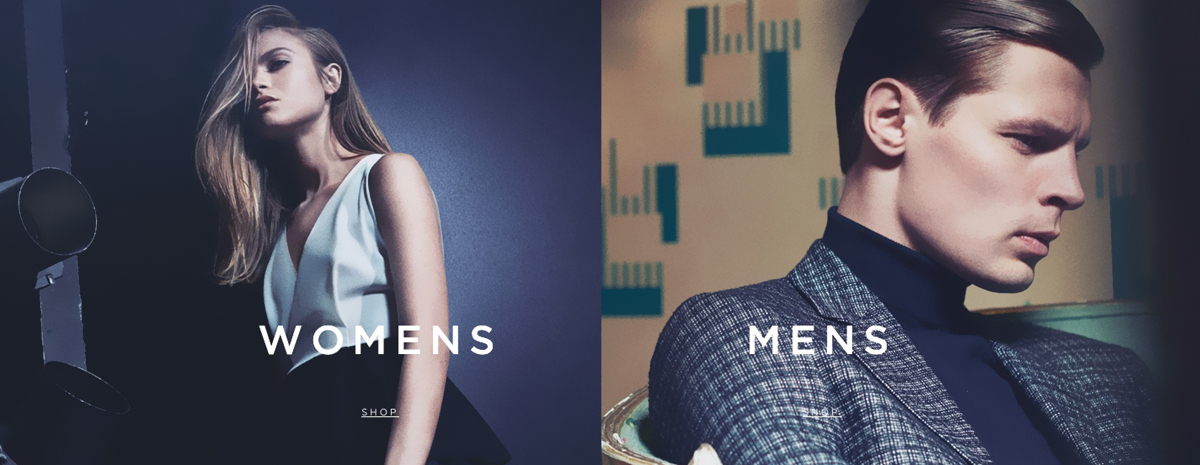
Fashion is an aesthetic expression in clothing, footwear, lifestyle, accessories, makeup, hairstyle and body proportions. Fashion is also an industry-supported expression tied to the fashion season and collections. Style is an expression that lasts over many seasons, and is often connected to cultural movements and social markers, symbols, class and culture.
Even though they are often used together, the term fashion differs from clothes and costume, where the first describes the material and technical garment, whereas the second has been relegated to special senses like fancy-dress or masquerade wear. Fashion instead describes the social and temporal system that “activates” dress as a social significance in a certain time and context.
Fashion as an Industry
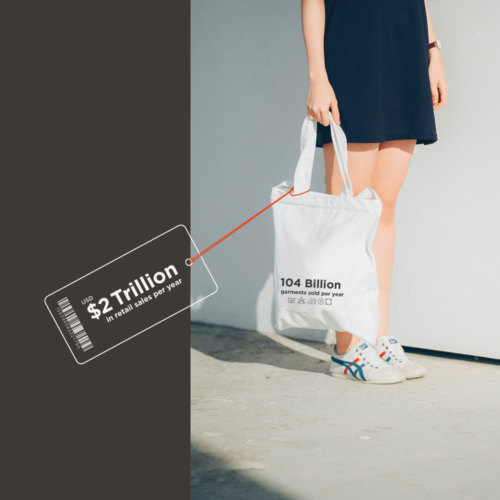 The notion of a global fashion industry is a product of the modern age. Prior to the mid-19th century, most clothing was custom-made. It was handmade for individuals, either as home production or on order from dressmakers and tailors. By the beginning of the 20th century—with the rise of new technologies such as the sewing machine, the rise of global capitalism and the development of the factory system of production, and the proliferation of retail outlets such as department stores—clothing had increasingly come to be mass-produced in standard sizes and sold at fixed prices.
The notion of a global fashion industry is a product of the modern age. Prior to the mid-19th century, most clothing was custom-made. It was handmade for individuals, either as home production or on order from dressmakers and tailors. By the beginning of the 20th century—with the rise of new technologies such as the sewing machine, the rise of global capitalism and the development of the factory system of production, and the proliferation of retail outlets such as department stores—clothing had increasingly come to be mass-produced in standard sizes and sold at fixed prices.
Although the fashion industry developed first in Europe and America, as of 2017, it is an international and highly globalized industry, with clothing often designed in one country, manufactured in another, and sold worldwide. For example, an American fashion company might source fabric in China and have the clothes manufactured in Vietnam, finished in Italy, and shipped to a warehouse in the United States for distribution to retail outlets internationally. The fashion industry has long been one of the largest employers in the United States, and it remains so in the 21st century. However, U.S. employment declined considerably as production increasingly moved overseas, especially to China. Because data on the fashion industry typically are reported for national economies and expressed in terms of the industry's many separate sectors, aggregate figures for world production of textiles and clothing are difficult to obtain. However, by any measure, the clothing industry accounts for a significant share of world economic output. The fashion industry consists of four levels:
- The production of raw materials, principally fibers and textiles but also leather and fur.
- The production of fashion goods by designers, manufacturers, contractors, and others.
- Retail Sales
- Various forms of Advertising and Promotion
These levels consist of many separate but interdependent sectors. These sectors are Textile Design and Production, Fashion Design and Manufacturing, Fashion Retailing, Marketing and Merchandising, Fashion Shows, and Media and Marketing. Each sector is devoted to the goal of satisfying consumer demand for apparel under conditions that enable participants in the industry to operate at a profit.
FUTURE OF FASHION AND INDUSTRY
Fashion has always been a hotbed for innovation — from the invention of the sewing machine to the rise of e-commerce. Like tech, fashion is forward-looking and cyclical. It’s also a huge industry. The ~$2.4T fashion sector is one of the largest industries in the global economy.
- Product Design
- Artificial Intelligence becomes the designer
- How AI is influencing brands
- Manufacturing
- No more fashion seasons
- The push for sustainability
- Rapid iteration & production
- Streamlining the supply chain
- 3D printing personalized products
- Robot designs for the manufacturing floor
- Inventory & Distribution
- RFID for verification, automation, & online integration
- Blockchain in the supply chain
- Distribution scales down
- D2C brands shun physical retail
- From ownership to usership: The rise of clothing-as-a-service
- Retail & Virtual Merchandising
- What’s Next? Tech Fashions to Watch
- Connected Jewelry, Apparel & Footwear
- 3D scanning
- Novel fabrics
Product Design - Tech is automating the fashion designer.
Fashion brands of all sizes and specialties are using technology to understand customers better than ever before. As those data collection efforts grow more sophisticated, artificial intelligence will reshape brands’ approach to product design and development, with a focus on predicting what customers will want to wear next.
ARTIFICIAL INTELLIGENCE BECOMES THE DESIGNER
 Google has already tested the waters of user-driven AI fashion design with Project Muze, an experiment it deployed in partnership with German fashion platform Zalando. The project trained a neural network to understand colors, textures, style preferences, and other “aesthetic parameters,” derived from Google’s Fashion Trends Report as well as design and trend data sourced by Zalando.
Google has already tested the waters of user-driven AI fashion design with Project Muze, an experiment it deployed in partnership with German fashion platform Zalando. The project trained a neural network to understand colors, textures, style preferences, and other “aesthetic parameters,” derived from Google’s Fashion Trends Report as well as design and trend data sourced by Zalando.
From there, Project Muze used an algorithm to create designs based on users’ interests and alignment with the style preferences recognized by the network.
Amazon is innovating in this area as well. One Amazon project, led by Israel-based researchers, would use machine learning to assess whether an item is “stylish” or not. Another, out of Amazon’s Lab126 R&D arm in California, would use images to learn about a particular fashion style and create similar images from scratch. If that sounds like “fast fashion by Amazon,” that’s because it probably is. The e-commerce giant has also patented a manufacturing system to support on-demand apparel-making. The tech could be used to support its Amazon Essentials line or the suppliers in Amazon’s logistics network.
Of course, the outcomes of human-free AI design aren’t always runway-ready. Many designs created for users of Google’s Project Muse were just unwearable scrawls and scribbles, while some reports on the Amazon Lab126 initiative called the design results “crude.”
But the gap between AI-developed designs and human-made ones is closing. In April 2019, an AI “Designer” called DeepVogue placed second overall and won the People’s Choice Award at China’s International Fashion Design Innovation competition. The system, designed by Chinese technology firm Shenlan Technology, uses “deep learning” to produce original designs drawn from images, themes, and keywords imported by human designers.
ARTIFICIAL INTELLIGENCE IS ALREADY INFLUENCING FASHION BRANDS
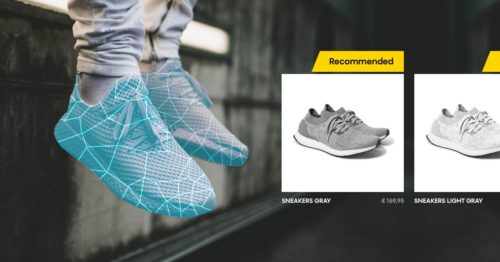 In 2018, Tommy Hilfiger announced a partnership with IBM and the Fashion Institute of Technology. The project, known as “Reimagine Retail,” used IBM AI tools to decipher:
In 2018, Tommy Hilfiger announced a partnership with IBM and the Fashion Institute of Technology. The project, known as “Reimagine Retail,” used IBM AI tools to decipher:
- Real-time fashion industry trends
- Customer sentiment around Tommy Hilfiger products and runway images
- Resurfacing themes in trending patterns, silhouettes, colors, and styles
Knowledge from the AI system was then served back to human designers, who could then use it to make informed design decisions for their next collection.
“Reimagine Retail was a powerful example of what happens when fashion partners with a global tech leader to advance challenging innovations” – Michael Ferraro, director of the FIT/Infor DTech Lab.
 Stitch Fix is already at the forefront of AI-driven fashion with its “Hybrid Design” garments, which are created by algorithms that identify trends and styles missing from the Stitch Fix inventory and suggest new designs — based on combinations of consumers’ favorite colors, patterns, and textiles — for human designers’ approval.
Stitch Fix is already at the forefront of AI-driven fashion with its “Hybrid Design” garments, which are created by algorithms that identify trends and styles missing from the Stitch Fix inventory and suggest new designs — based on combinations of consumers’ favorite colors, patterns, and textiles — for human designers’ approval.
The company details how it works (shown below) in the “Algorithms Tour” on its website. Stitch Fix has developed over 30 pieces of apparel using the Hybrid Design methodology.
The company has said that the AI-designed pieces perform comparably in “keeper” sales to the garments from its fashion-brand suppliers. That’s likely because Stitch Fix has such vast troves of customer data informing its AI, thanks to its subscription-based, feedback-focused business model
“We’re uniquely suited to do this,” said Eric Colson, Chief Algorithms Officer at Stitch Fix. “This didn’t exist before because the necessary data didn’t exist. A Nordstrom doesn’t have this type of data because people try things on in the fitting room, and you don’t know what they didn’t buy or why. We have this access to great data and we can do a lot with it.”
 Design isn’t the only area where Stitch Fix is putting AI and machine learning initiatives to work. The company employs a team of more than 85 data scientists to oversee machine learning algorithms that are used to inform everything from client styling to logistics to inventory management.
Design isn’t the only area where Stitch Fix is putting AI and machine learning initiatives to work. The company employs a team of more than 85 data scientists to oversee machine learning algorithms that are used to inform everything from client styling to logistics to inventory management.
According to Colson, the company is already seeing ROI from its AI investments, including increased revenue, decreased costs, and improved customer satisfaction.
As more and more AI “assistance” programs advance, they will help brands make smarter strategic decisions around product development and new business lines. 3D design platforms like CLO (shown below) also make it easy to tweak designs on the fly. This means brands can already use real-time AI insights to modify fashions right up to the minute they hit production.
Below, we illustrate how tech is automating away the fashion designer, as styles become more personalized and influenced by digital signals.
Similar to Amazon’s Lab 126 initiative & Google’s Project Muze, scientists from UC San Diego and Adobe have outlined a way for AI to learn an individual’s style and create customized computer-generated images of new items that fit that style.
The system could enable brands to create personalized clothing for a person based solely on their engagement with visual content.
At a more macro level, it could also allow a brand to predict broader fashion trends based on historical data from its entire user base. The predictions could ultimately be used to guide the design of a product or an entire label.

Excerpt from “Visually-Aware Fashion Recommendation and Design with Generative Image Models”
The next era of fashion is all about personalization and prediction. With more and more data, algorithms will become trend hunters — predicting (and designing) what’s next in ways that have never been possible.
True Fit, for example, closed a $55M Series C round in 2018 to bring its funding to $102M. The company’s big data platform facilitates capabilities like AI-powered fashion discovery and exact-fit clothing and shoe recommendations.
With over 100 million registered users, the platform uses transaction data to determine customer preferences that “better personalize all touch points of the consumer journey” for brands, according True Fit CEO William R. Adler.
Another company capitalizing on the smart fitting, Virtusize, enables online shoppers to buy the right size, either measuring the clothes in their closet or by comparing specific brands and styles to their own.
Virtusize claims that, by removing uncertainty around size and fit, it can increase average order values by 20% and decrease return rates by 30%. The Japan-based company counts Balenciaga and Land’s End among its clients, as well as Zalora — a leading online fashion store in Asia. Increasingly, consumer preferences will guide every aspect of the design and production process.
Platforms like True Fit may help identify the types of materials shoppers prefer, or even pinpoint how important sourcing and manufacturing conditions are to a unique shopper.
Manufacturing - Fast fashion has created an instant gratification mentality
Since WW2, fashion has officially been broken up into seasons: spring/summer lines debut on runways in early fall, and autumn/winter lines debut in February. The staggered timeline is designed to give brands enough time to gauge the interest of retail buyers and customers. In the time between when fashions are introduced and when they arrive on store shelves, brands assess demand so that they can manufacture the right number of garments for the season.
Fast fashion, in which designs move quickly from catwalk to store shelves, has upended every aspect of that model.
Brands like Zara, H&M, Top Shop, and Forever 21 have built their businesses on speed and agility. Once these retailers spot a new trend, they can deploy their hyper-rapid design and supply chain systems to bring the trend to market as quickly as possible. This allows fast fashion brands to beat traditional labels to market. Garments and accessories strutted down runways in September and February may get spotted and replicated by fast-fashion brands before the originals even hit stores.
With a nearly real-time ability to get the newest styles on shelves, fast fashion brands can also push out broader varieties of clothing styles to cater to the preferences of smaller, more targeted segments of customers. They can also push smaller runs to test the waters for customer demand, or sell collections for hyper-short lifespans.
NO MORE FASHION SEASONS
 The rise of fast fashion is decimating the biannual seasonality that has long structured the fashion industry. Fast fashion brands may issue as many as 52 weekly “micro-seasons” per year. Topshop, for example, introduces ~400 styles per week on its website.
The rise of fast fashion is decimating the biannual seasonality that has long structured the fashion industry. Fast fashion brands may issue as many as 52 weekly “micro-seasons” per year. Topshop, for example, introduces ~400 styles per week on its website.
To keep up, traditional apparel brands are now debuting around 11 seasons a year. Cheap alternatives to high-fashion items remain hot consumer commodities. Even amid the retail slowdown, Zara’s parent company, Spanish retail giant Inditex, saw nearly $30B in sales in FY18 (February 2018 – January 2019) — a 3% increase in net sales.
Social media accelerates that cycle. Influencer marketing and other social media strategies help new trends travel fast, creating rapid consumer demand for hyper-cheap fashions. Shoppers act on that demand instantly, thanks to “See-Now Buy-Now” tools on platforms like Instagram and Pinterest.
Fashion Nova is one example of a fast fashion e-commerce brand that has successfully leveraged social media to build its customer base and its brand. The company has more than 15 million followers on Instagram, as well as more than 3,000 influencers, known as #NovaBabes, promoting its clothes.
Fast fashion brand Boohoo has said that its profits doubled after paying celebrities to promote its products on Instagram to 16- to 24-year-old fans. Yet fast fashion clearly has a dark side. Brands manufacture low-cost, low-quality apparel in factories with questionable working conditions, relying on workers who receive low pay. The inexpensive materials used to create cheap garments are also laden with chemicals.
Since rapid production runs create excessive textile waste, cheaply made apparel harms both factory workers and the environment: according to the Environmental Protection Agency, some 12.8M tons of clothing is sent to landfills annually. Global textile production emits 1.2 billion tons of greenhouse gases annually (more than international flights and maritime shipping combined). The fashion industry is responsible for up to 10% of global CO2 emissions, 20% of the world’s industrial wastewater, 24% of insecticides, and 11% of pesticides used, according to some estimates.
While the sustainability issues within fashion, and fast fashion in particular, are not new, what is new is how the industry’s most influential customers are starting to respond.
THE PUSH FOR SUSTAINABILITY
 Consumers are wising up to the negatives of fast fashion: socially conscious shoppers are embracing the growing movement of “slow fashion,” which focuses on sustainable materials and transparent, ethical labor and manufacturing.
Consumers are wising up to the negatives of fast fashion: socially conscious shoppers are embracing the growing movement of “slow fashion,” which focuses on sustainable materials and transparent, ethical labor and manufacturing.
In 2018, the fashion search engine Lyst tracked more than 100 million searches on its shopping site and reported a 47% increase in shoppers looking for products with ethical and style qualifications, including terms such as “vegan leather” and “organic cotton.” The growing concern about sustainability is particularly prominent among younger generations: 83% of millennial's in the United States value companies implementing programs to improve the environment, according to The Conference Board Global Consumer Confidence Survey. And 75% are willing to change consumption habits for more sustainable offerings.
Young, upcoming brands in the fashion space are making moves to align with this shift in consumer sensitivities. Cuyana urges customers to shift their focus to buying “fewer, better things.” Its products are made with sustainable, plant-based materials including linen and silk. Another young company called Pact offers cotton garments that are certified organic by GOTS (Global Organic Textile Standard).
The shift to sustainability is particularly noticeable in the shoe industry. Allbirds, for example, produces shoes made from eucalyptus leaves. In response, a number of prominent brands have announced new clothing lines and initiatives focused on sustainable materials:
- H&M’s Conscious Collection features a leather jacket and cowboy boots made using Piñatex, a leather-like material made from pineapple leaves which are typically discarded in pineapple production. The line supports H&M’s broader goal to increase the use of sustainable resources to 100% by 2030.
- Levi’s Wellthread x Outerknown collection is piloting products with 30% “cottonized” hemp and jackets with detachable hardware to make them more easily recyclable. The company’s Water<Less(R) Denim line was created to reduce the amount of water used in producing some of the brand’s most popular styles and fits.
- Adidas has announced plans to make 11 million pairs of sneakers with recycled ocean plastic in 2019.
- Online resale site thredUP teamed up with Conscious Commerce to launch the Choose Used Capsule Collection, a limited edition collection of secondhand pieces screen-printed with fresh designs.
A shift to more sustainable fabrics is not the only way the fashion industry is shifting to embrace more sustainable practices.
ThredUp bills itself as “the largest online consignment and thrift store.” The company predicts that the total secondhand apparel market (resale + thrift & donations) will hit $51B by 2023 — driven by a growth in the resale sector.
Another company, Poshmark, takes a marketplace approach to fashion, allowing customers to buy and sell used items with other users through the site.
Taking a cue from these younger companies, H&M announced (in April 2019) that it will test sales of secondhand and vintage items in a bid to boost the brand’s sustainability cred and connect with environmentally minded customers.
AI and advanced technologies may also have a part to play in the push for sustainability in fashion. One area they could improve is returns, which is currently a significant source of waste within the fashion industry (and the e-commerce segment in particular). On average, 40% of online purchases are returned. With data and AI capabilities, retailers could more effectively match customers’ shopping behavior and preferences, potentially reducing the overall number of returns.
Even as the slow fashion movement gains traction, the rise of social media and the fast fashion model (not to mention e-commerce) have transformed fashion as we know it.
RAPID ITERATION & PRODUCTION
 The costs of starting a fashion brand have gone down significantly, thanks to technology and e-commerce. The dawn of Etsy made it easy for anyone to start an online shop and build a following. Now, decreased production costs make it feasible for small or emerging brands to manufacture small runs of products at reasonable margins and build up online audiences from there.
The costs of starting a fashion brand have gone down significantly, thanks to technology and e-commerce. The dawn of Etsy made it easy for anyone to start an online shop and build a following. Now, decreased production costs make it feasible for small or emerging brands to manufacture small runs of products at reasonable margins and build up online audiences from there.
In years past, fashion labels would have to manufacture hundreds or thousands of items in order to produce them at a reasonable price. Now, startups like Maker’s Row make it simple for small labels to find small-batch manufacturing partners that can meet their needs at scale, with transparent standards around pricing and sourcing. Emerging brands can weave small-batch runs (and transparent production standards) into their marketing.
NYC-based menswear line Noah, for example, produces ultra-small batch clothing lines — rumored to sometimes be as little as 12 or 24 items — and often sell out of these items quickly. The launches includes detailed blog posts about the items’ sourcing and purpose. Large high-end brands are also evolving their approach to production to better compete with fast fashion retailers.
Tommy Hilfiger makes the fashions in its new TommyNow line available instantly — all around the world, in-store and online — as soon as they sashay down the runway.
That means TommyNow items hit stores three times faster than traditional collections, with just a 6-month window between product ideation/design and release.
“It’s about delivering on the instant gratification that consumers are really seeking,” says Avery K. Baker, Chief Brand Officer at Tommy Hilfiger. “Closing that gap between the visibility of a fashion show and the moment of purchase.”
The Hilfiger brand has gone all-in on making the Now line experiential and immediate.

The first TommyNow collection — a collaboration with model Gigi Hadid — launched with a two-day Fashion Week extravaganza that supported a huge social media push. The event livestream was made “shoppable” for Facebook Live and supplemented with instantly-buyable product debuts on Pinterest, Instagram, and Snapchat.
Many other brands aim to follow TommyNow’s example. That’s no easy feat: shortening an 18-month production window into just 6 months required the Tommy Hilfiger brand to overhaul its entire design, manufacturing, and distribution ecosystems.
Yet plenty of technologies are emerging to make scalable, sustainable production more feasible, at a faster pace.
STREAMLINING THE SUPPLY CHAIN
Some brands are “internalizing” production to quicken the pace of manufacturing and meet consumer demand more rapidly. In April 2018, Gucci launched Gucci Art Lab, a 37,000-square-meter product development and lab testing center with in-house prototyping and sampling activity for leather goods, new materials, metal hardware, and packaging. The project’s aim is to bring the Gucci supply chain closer to home — ultimately giving the brand greater control over product development, sampling, and material development.
Elsewhere, brands are exploring how 3D printing can help them produce goods on-demand and create new avenues for customization.
3D PRINTING PERSONALIZED PRODUCTS
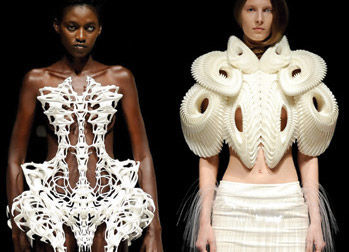 Performance professional apparel brand Ministry of Supply unveiled an in-store 3D printer that creates customized knitwear (and can produce a customized blazer in just 90 minutes). Printing the garments reduces fabric waste in production by about 35%.
Performance professional apparel brand Ministry of Supply unveiled an in-store 3D printer that creates customized knitwear (and can produce a customized blazer in just 90 minutes). Printing the garments reduces fabric waste in production by about 35%.
Adidas has also partnered with Carbon to create 3D-printed sneakers and shoe parts. The limited edition Adidas Futurecraft 4D, which retails for around $300, is the latest product from the partnership (shown below). Adidas also invested in Carbon through its Hydra Ventures arm in Q4’17, and joined Carbon’s board of directors.
For now, Futurecraft 4D shoes are hard to find, because production is limited. It’s a situation that the company hopes to change over time.
“Ultimately, we’re still ramping up the innovation. It will be faster, more limited material. Ideally, the vision is to build and print on demand … Right now, most of our products are made out of Asia and we put them on a boat or on a plane so they end up on Fifth Avenue.” – Adidas CMO Eric Liedtke

New Balance and Reebok have launched similar initiatives. In March 2018, Reebok released the Liquid Floatride Run shoe, the first product to market out of the company’s 3D printing concept, Liquid Factory. The shoe features 3D-printed “laces,” Liquid Grip on the sole, and the company’s new Flexweave material.
“Footwear manufacturing hasn’t dramatically changed over the last 30 years,” says Bill McInnis, Head of Future at Reebok. “Every shoe, from every brand is created using molds— an expensive, time-consuming process.
“With Liquid Factory, we wanted to fundamentally change the way that shoes are made, creating a new method to manufacture shoes without molds. This opens up brand new possibilities both for what we can create, and the speed with which we can create it.”
NEW ROBOT DESIGNS FOR THE MANUFACTURING FLOOR
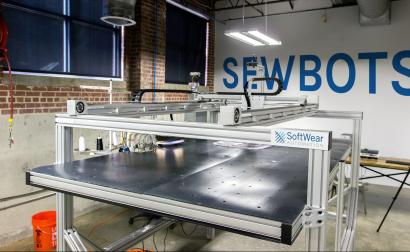 As with every other industry, automation and robotics are also coming for fashion manufacturing. They’re already in the warehouse: many brands use automated storage and retrieval systems (ASRS) for stocking and transporting inventory. Using robots in garment manufacturing, however, has been more challenging.
As with every other industry, automation and robotics are also coming for fashion manufacturing. They’re already in the warehouse: many brands use automated storage and retrieval systems (ASRS) for stocking and transporting inventory. Using robots in garment manufacturing, however, has been more challenging.
Robo-cutting fabrics has been possible for years, but sewing presents a challenge, as hard robots have difficulty working with pliable, elastic fabrics. Advances in soft robotics will infiltrate garment-making in the future. In the meantime, startups are combining hardware and software to create automated sewing systems.
SoftWear Automation, for example, is developing “Sewbots” equipped with robotic arms, vacuum grippers, and specialized “micromanipulators” that can guide a piece of cloth through a sewing machine with sub-millimeter precision.
The Sewbots use specialized cameras and computer vision software to track individual threads at 1,000 frames per second. (In one contract, the startup brought a supplier’s T-shirt manufacturing costs down to just $0.33 a shirt.)
In February 2019, SoftWear announced Sewbots-as-a-Service, which allows manufacturers, brands, and retailers to rent the fully automated sewing workline. The program is intended to enable US-based companies to source and manufacture in the US at a lower cost than outsourcing, with greater predictability and quality.
Robots have long been used in shoemaking, but Nike doubled down on robo-manufacturing with its 2013 investment Grabit, a robotics startup that uses electroadhesion (a form of static electricity) to help machines manipulate objects in novel ways. Since then, Nike has started using Grabit’s technology to assemble a sneaker’s “upper”— the flexible part of the shoe that sits atop the foot. (The upper is highly technical to manufacture, and had long been one area where human intervention was necessary.)
By embracing manufacturing systems that rely more on machines and less on humans, fashion brands of the future will speed up production and minimize concerns around labor conditions in their facilities. However, they also risk potential blowback from automating a factory workforce — albeit a notoriously poorly paid workforce operating under difficult conditions.
Inventory & Distribution - Tech makes inventory transparent & traceable
As fashion enters its next era, goods produced using hyper-rapid manufacturing systems will be tracked and distributed using next-gen inventory management tools. Brands are increasingly deploying a combination of sensors, scanners, and cloud-based software to monitor and maintain inventory. Radio frequency identification technology (RFID tagging) is one approach likely to see widespread adoption.
RFID tags are cheap, battery-free smart stickers that can be used for digital cataloging. Unlike barcodes, the signals from RFID tags can be read from some distance away, lessening the time it takes to manually log items.
RFID FOR VERIFICATION, AUTOMATION, & ONLINE INTEGRATION
After failed attempts by Walmart and JC Penney to deploy RFID at scale in the early 2000s, a number of companies have integrated the technology.
Since announcing an RFID initiative in Q4’16, Macy’s has been working to get 100% of all items in every store tagged. The store is working with suppliers to tag merchandise at the assembly site, enabling better tracking to reduce lost inventory and out-of-stock incidents.
“With an increase in the inventory accuracy, out-of-stocks are significantly reduced,” said Bill Connell, Macy’s SVP for Store Operations & Process Improvement. “And by cutting the out-of-stocks, item availability is increased, which can lead to substantial and measurable sales increases.”
Some of Macy’s suppliers — especially luxury brands — have also been using RFID to fight off counterfeiting, as well as to analyze where garments are purchased.
 Italian-French luxury label Moncler, for example, outfits its products with RFID chips (shown left) that customers can authenticate via an app or website — creating a tangible way to distinguish Moncler goods from knock-offs. (Brands like Benetton and Salvatore Ferragamo have pursued similar programs.)
Italian-French luxury label Moncler, for example, outfits its products with RFID chips (shown left) that customers can authenticate via an app or website — creating a tangible way to distinguish Moncler goods from knock-offs. (Brands like Benetton and Salvatore Ferragamo have pursued similar programs.)
Automated stocking with RFID is also making fast fashion even faster: Zara’s RFID system encodes each garment on the manufacturing floor, allowing for the highly targeted tracking of item sales, stocking, and availability.
Each time a garment is sold off the rack, Zara’s system prompts the stock room to send another item out to the floor. The granularity allows online window shoppers to check if an item is in stock at a local store before making a purchase.
The ease of scanning RFID tags also makes stores more efficient: Zara reports that associates who used to spend 40 hours per store scanning barcodes can now use RFID-reading guns to log inventory in closer to just 5 hours.
Zara’s approach to RFID aligns with a larger trend around shelf monitoring for retail merchandising. Startups like Repsly and Eversight use in-store cameras and/or RFID to help brands monitor the presentation of merchandise on store shelves and track the results of in-store promotions or displays. Using trend data and AI, their software then helps brands auto-optimize their promotion strategies.
Burberry, meanwhile, has integrated RFID tags into more than just tracking and verification, using them to make shopping in stores more experiential and engaging. Products in Burberry’s 500 worldwide retail stores are fitted with RFID tags that can communicate with the Burberry app, which offers users suggestions for how to wear or use.
In select stores, customers can view this “bespoke” multimedia content on in-store display screens, as you can see below. Interactivity aside, most RFID-first approaches to supply chain improvement focus on tracking the movement of goods after manufacturing and assembly. (Brands typically “chip” RFIDs into items at the “Made In ____” location, which is the last part of the production process.)
Retailers aren’t the only ones taking advantage of RFID. Herman Kay, manufacturer of outerwear for brands like London Fog, Anne Klein, and Michael Kors, started using RFID “after Macy’s extolled the technology’s virtues in 2013.” According to CIO/CTO Rich Haig, RFID has drastically improved order fulfillment accuracy and made Herman Kay “a much better supplier.”
As end-to-end transparency becomes more important to environmentally conscious apparel consumers, a more thorough and integrated solution will be necessary. In fact, fashion brands’ embrace of RFID may be the on-ramp for another technology that’s very much in vogue: blockchain.
BLOCKCHAIN IN THE SUPPLY CHAIN
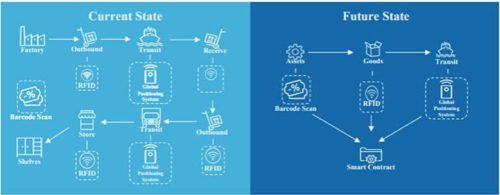 In fashion — and practically every other industry — blockchain has transformative potential for making the supply chain transparent.
In fashion — and practically every other industry — blockchain has transformative potential for making the supply chain transparent.
By giving every commercially produced good a unique digital ID or “token” on a decentralized, distributed ledger, companies will be able to create end-to-end digital histories for all items in their inventories. As materials, garments, or accessories move through the global supply chain, blockchain tracking will create accurate transaction records based on their location data, content, and time stamps. (The digital IDs can be tracked using RFID tags, QR codes, or NFC tags, which use electromagnetic waves the same way RFID uses radio waves.)
Fashion brands are already exploring how blockchain tracking injects transparency into the garment creation process. Blockchain startup Provenance, for example, piloted a fashion-blockchain project with London-based designer Martine Jarlgaard.
The initiative tracked the journey of raw materials through the supply chain right up to the finished garment, logging and tracking every step from shearing wool at an alpaca farm to spinning it at a mill to assembling it at the designer’s studio. Upon scanning a garment’s label, consumers can view a map of the clothing’s movement through the entire manufacturing and distribution process — viewing every step of a garment’s journey to a consumer.
Blockchain startup VeChain worked with Chinese-New York fashion label Babyghost on a similar initiative for the brand’s Summer 2017 collection. In Fall 2018, H&M announced that it, too, was launching a pilot program with VeChain, using one wool beanie from the company’s Arket clothing line to test blockchain technology’s ability to improve product data traceability in its supply chain.
For now, blockchain-backed approaches to supply chain management may be more buzz than substance. Yet as the movement toward more ethical, sustainable “slow fashion” grows, the potential for blockchain in the space is immense and significant — especially because the concept of “inventory” is changing day by day.
DISTRIBUTION SCALES DOWN
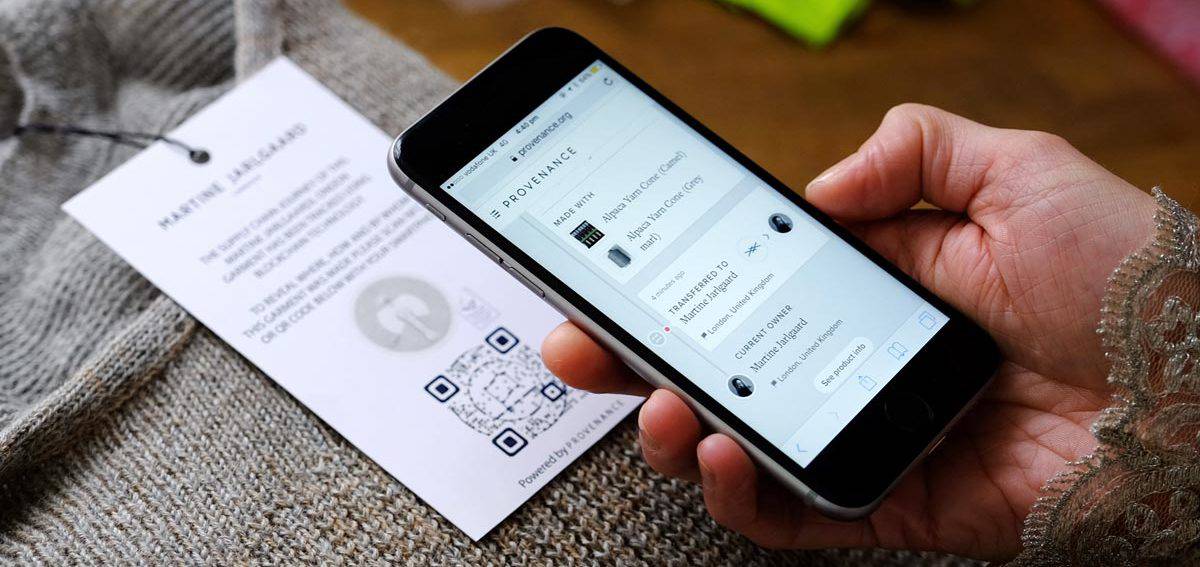 Many of the goods tracked using tech like RFID and blockchain won’t ever land in a traditional retail store at all. The fashion sector has already witnessed the demise of the mall as consumers embrace online shopping, and e-commerce continues to ravage department and apparel stores alike. An estimated 1.8 billion people worldwide purchased goods online in 2018. Global e-retail sales totaled $2.8 trillion US dollars. Projections show a growth of up to 4.8 trillion U.S. dollars by 2021.
Many of the goods tracked using tech like RFID and blockchain won’t ever land in a traditional retail store at all. The fashion sector has already witnessed the demise of the mall as consumers embrace online shopping, and e-commerce continues to ravage department and apparel stores alike. An estimated 1.8 billion people worldwide purchased goods online in 2018. Global e-retail sales totaled $2.8 trillion US dollars. Projections show a growth of up to 4.8 trillion U.S. dollars by 2021.
Brick-and-mortar fashion companies are feeling the pain of that shift. More than 1,875 fashion retailers closed their doors in 2018. Among the most high-profile mass closures (or announcement of mass closures) in recent years:
- In 2016, Macy’s announced its decision to close 100 stores. It has since begun to shut down these locations as their leases expire.
- JC Penney closed 138 stores in summer 2017.
- The Limited shut down its 250 remaining stores in January 2017.
- Limited parent company L Brands plans to close 53 Victoria’s Secret locations in 2019 amid sagging sales.
- Sears closed 80 locations in the first few months of 2019.
- The Gap announced plans to close 230 stores around the world in 2019 and 2020.
As retail spaces close up shop, subscription boxes are giving fashion brands a new avenue for distribution.
Services like Stitch Fix (which went public in Q4’17) and Trunk Club (acquired by Nordstrom Q3’14) ship product assortments to members on a monthly basis. Clients can purchase the items they want to keep and send back the ones they don’t. In 2018, Stitch Fix reported net revenues of $1.2B, an increase of 26% year-over-year. The company has 2.7 million active customers in the US and plans to launch in the UK in 2019.
As subscribers interact with styles online, share information about their preferences, and give feedback on items they do or don’t want to buy, the recommendation algorithms improve over time — like Netflix suggestions for your wardrobe.

Subscription boxes help brands get their goods in front of targeted groups of consumers likely to want their wares. But unless a brand launches its own box, it’s always competing against other labels to be the “keeper” every month.
And since subscription boxes reach a much smaller audience than traditional department or apparel stores, they’re still no replacement for big retail chains’ enormous distribution power.
Pop-up shops are another example of a new distribution channel brands are leveraging. Brands and designers are increasingly renting or leasing empty store spaces for short-term use, typically in well-trafficked urban areas. Pop-up rental space company Appear Here reported a 300% increase in demand for their temporary spaces in 2018.
Pop-ups pose benefits for brands large and small:
- For big-name companies, pop-up shops’ smallness makes it possible to connect with shoppers in a more creative and intimate setting, which can help drive loyalty.
- For emerging fashion brands, pop-ups’ experiential nature can help create media hype and brand awareness.

Both large and small companies can use pop-ups to gauge consumer interest before investing in a full production launch or entering a new fashion vertical.
Like the sample sales that preceded them, pop-ups also create a special sense of urgency that motivates consumers.
The results bear out in sales and engagement: according to retail strategy firm The Lionesque Group, the average pop-up sees a 35% increase in sales from the time doors open to 6 months after doors close, while half see an average 30% increase in social media engagement through the lifespan of the pop-up shop.
Pop-ups first emerged in response to the late-2000s US economic crash, but they’ve grown into a global trend, even infiltrating elite fashion markets like Milan: Italian brands Furla, Genny, and Paula Cadematori are among the latest European labels to invest in temporary shops.
And the small-store phenomenon is going even more micro: unmanned mini stores are a growing trend in China, and Stockwell (fka Bodega) wants to bring automated vending machines to US apartment buildings and dorms.
 The kiosk trend has so far focused on convenience items like food and toiletries, but it may begin to infiltrate the fashion or accessories space.
The kiosk trend has so far focused on convenience items like food and toiletries, but it may begin to infiltrate the fashion or accessories space.
You can already get new sunglasses, Jean Paul Gaultier clothing, or the keys to a $90,000 Bentley using the Semi-Automatic at the Mondrian hotel on South Beach (shown right).
Several startups have emerged to help companies explore new distribution strategies. Las Vegas-based WithMe offers brick-and-mortar-as-a-service: the company designs, builds, and manages short-term stores for brands and retailers across the world, with leases averaging just 90 days.
Bulletin is also pioneering a “WeWork” model for retail, offering flexible options to brands that want space for their products in existing physical stores. The company divides its store locations into different sections of varying sizes (sometimes as small as a bit of shelf space). Each section can then be rented out by different businesses on a month-by-month basis.
With pop-ups and kiosks gaining momentum, hosting short-term brick-and-mortar events could help generate excitement for many “D2C” or direct-to-consumer fashion brands.
D2C BRANDS SHUN PHYSICAL RETAIL
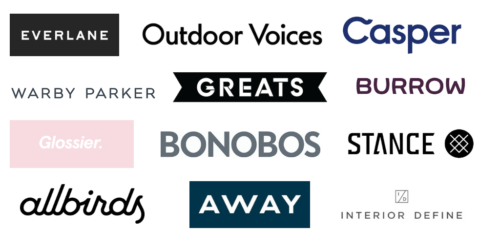 For D2C brands, pop-ups, kiosks, and normal stores are simply the physical extensions of an online-first strategy. Technology has changed the meaning of “direct to consumer.” It’s not about catalogs or TV commercials anymore: top D2C fashion brands like Everlane, Bonobos, and Allbirds create their own markets by growing loyal followings of customers and leveraging effective SEO, social media, and online marketing strategies.
For D2C brands, pop-ups, kiosks, and normal stores are simply the physical extensions of an online-first strategy. Technology has changed the meaning of “direct to consumer.” It’s not about catalogs or TV commercials anymore: top D2C fashion brands like Everlane, Bonobos, and Allbirds create their own markets by growing loyal followings of customers and leveraging effective SEO, social media, and online marketing strategies.
D2C brands often put a premium on ranking high in Google’s search results, turning Instagram followers into advocates, and using Facebook engagement (and/or highly targeted ads) to continually expand their reach.
D2C brands then use e-commerce tools and exclusivity-based marketing tactics to launch promotions and drive digital sales:
- Highly visual platforms drive interest, and “See-Now Buy-Now” buttons drive immediate sales conversions.
- Items are often made-to-order, with customers selecting from different options or adding personalized touches.
- Luxe packaging and brand desirability make shoppers eager to share their purchases on social media — driving a network effect of engagement.
The D2C model is also highly efficient. The risk of over-manufacturing is eliminated, since there’s no chance of bulk ordering from buyers — the buyer is the individual who will wear the product, not a retailer middleman. Brands also don’t need to fight for product placement in stores or worry about setting up and monitoring in-store promotions. Supply chain complexity is reduced, since there are no intermediaries between the brand and its audience. Those benefits create additional advantages that can help D2C brands appeal to modern consumers.
Control over the brand is one: the brand isn’t fighting for retail buyers’ interest. The only audience a D2C label has to please is the one it organically created. There’s also no need for D2C brands to shift their look or style to suit passing fads or trends. Instead, they can align their brands with the values of their target consumer, as Everlane (shown below) has. D2C brands also own their customer engagement data, which allows them to understand demand and sentiment in precise, targeted ways.
This helps create a digital feedback loop as brands produce new product lines and choose new color palettes. They have close relationships with consumers and can use social media signals, customer service interactions, and prior e-commerce behavior to inform decisions about what to design next.
By keeping supply chain complexity to a minimum and focusing on quality, D2C fashion brands can also maintain higher sales margins and shift pricing strategies as they please — creating more ways to make money from marked-down inventory. Everlane, for one, built its thriving business around supply-chain and pricing transparency: an infographic about the cost of manufacturing a designer t-shirt (and how much cheaper Everlane’s was) helped the brand attract 200,000 user-members in just a year.
A key piece of Everlane’s e-commerce strategy is also its “Choose What You Pay” feature, which allows members to select from different “recommended” prices for past-season styles. Depending on which price you select, Everlane breaks down where your money is allocated across production, overhead, and “growth.”
With conventional apparel retailers closing up shop and D2C brands taking off, traditional fashion brands like Tommy Hilfiger are now following the cues of early leaders and becoming more D2C-focused.
FROM OWNERSHIP TO USERSHIP: THE RISE OF CLOTHING-AS-A-SERVICE
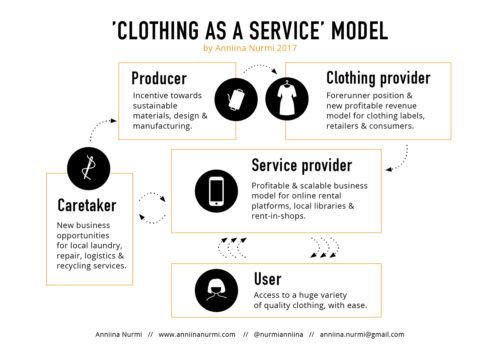 The advent of the internet has disrupted traditional models of ownership across a number of different product categories. Consumers have traded CD collections for Spotify subscriptions, DVD shelves for Netflix memberships. Now, the shift from ownership to usership is coming for fashion.
The advent of the internet has disrupted traditional models of ownership across a number of different product categories. Consumers have traded CD collections for Spotify subscriptions, DVD shelves for Netflix memberships. Now, the shift from ownership to usership is coming for fashion.
What’s driving the change? A growing consumer desire for variety, sustainability, and affordability. The average consumer today buys 60% more items of clothing than they did 15+ years ago — but consumers keep that clothing for only half as long as they used to.
In a survey of 2,000 respondents, 1 in 7 consumers said they consider it a fashion faux-pas to be photographed in the same outfit twice. And as we’ve seen, sustainability is a growing concern among shoppers — as is, of course, cost.
Clothing rental concepts offer consumers an avenue to continually refresh their wardrobe, while also protecting both the environment and their wallets. Rent the Runway is a fashion rental service that allows members to rent designer fashion items, either on a per-piece basis or a regular monthly basis. The company achieved unicorn status in March 2019, reaching a $1 billion+ valuation after receiving $125M in Series F funding.
Rent the Runway reports 11 million members for its service. In April 2019, the company announced a new children’s option, following in the footsteps of Stitch Fix, which also expanded into the children’s clothing space.
Gwynnie Bee is taking a size-inclusive approach to the rental trend, offering fashion brands that are inclusive of all sizes (0-32), including Calvin Klein, Adrianna Papell, and others. The service allows users to rent one item at a time for $49, or pay $199 for access to 10 items at a time (among other offerings).
China’s YCloset is coming at clothing rental from a slightly different angle, using a subscription rental model to grant customers access to an array of clothing and accessories, and giving the customer the option to buy pieces outright. To date, YCloset has raised $70M from investors, including Alibaba and Sequoia Capital China. According to the platform, it has more than 15 million registered users.
Established brands are starting to explore the rental trend as well. Express (Express Style Trial), New York & Company (NY&C Closet), and American Eagle (Style Drop) have all introduced programs that allow subscribers to rent up to 3 items at a time for monthly fees between $50 and $100 per month.
Interestingly, all 3 brands have partnered with the same third-party vendor to implement their “clothing-as-a-service” model. CaaStle bills itself as “a turnkey fully managed service for retailers” that acts as a “complement” to existing retail channels. According to the company’s website, CaaStle clients can expect a 100%+ increase in total brand spend and 20%-30% operating margins.
Clothing rental is a meaningful new trend in the clothing space, and likely to grow more prominent in coming years. The US apparel leasing market could reach $4.4B by 2028, according to one estimate. It’s important to maintain a sense of perspective, however: that number would represent less than 1% of total clothing sales in that year.
Retail and Virtual Merchandising - Tech responds to the retail "Size Correction."
As large retail spaces close around the country, smaller stores are shuttering too — even in urban shopping hubs. But physical retail isn’t going away — its purpose is just evolving.
As fashions brands continue to tailor their lines to smaller, more targeted customer audiences (and use D2C strategies to reach them), they no longer need to stock vast lineups of inventory in standalone shops or large department stores. What many brands do need are stores that help build or strengthen a connection between the customer and the label, creating a sense of excitement or urgency.
AR/VR REDEFINES THE ONLINE AND IN-STORE EXPERIENCE
 Augmented reality and virtual reality tech are increasingly being deployed to create digital experiences in stores and “in-store” experiences online. Several startups are helping brands enter a new era of experiential shopping. Obsess, for example, helps labels use AR or VR in three key areas:
Augmented reality and virtual reality tech are increasingly being deployed to create digital experiences in stores and “in-store” experiences online. Several startups are helping brands enter a new era of experiential shopping. Obsess, for example, helps labels use AR or VR in three key areas:
- E-commerce: Increase conversion by letting online/mobile shoppers see products in 3D in context in front of them.
- Physical retail: Use AR in-store to let shoppers access digital media on in-stock merchandise.
- Marketing: Create virtual or augmented experiences that “delight consumers” — like an AR pop-up, interactive catalog, or VR recreation of a store or boutique.
As part of Walmart’s Innov8 VR competition, Obsess created a photorealistic CG virtual store for Rebecca Minkoff. The experience included the ability to shop racks or runway using a headset and complete the checkout process in VR. In 2019, the company worked with Tommy Hilfiger to create a virtual version of a pop-up store for the brand’s collaboration with actress and singer Zendaya.
“What we’re trying to show here is that shopping in the future will be a combination of some elements of what physical stores have today, like visual merchandising and curated pieces, but then they have all of these other things that are not possible in physical stores,” said Neha Singh, Founder and CEO of Obsess.
VR stores may take off as the tech continues to get cheaper and more immersive. For example, brands could ship headsets to high-end, repeat customers, or have headsets on hand in smaller stores to walk buyers through an entire collection. VR fashion shows are already being streamed by Victoria’s Secret, Tommy Hilfiger, and other labels.
Meanwhile, augmented reality is turning marketing materials into 3D experiences: Maggy London, for example, worked with Code & Craft to create an AR catalog for mobile. Created using 3D scanning and Apple’s ARKit, users put a mobile phone up to items in the catalog and could view them as realistic, virtual 3D products.
3D scanning and AR are also reinventing the fitting room — at home and in-store.
 TopShop has used in-store AR mirrors so customers don’t need to get physically undressed to try on clothes, while Uniqlo’s Magic Mirrors (right) let customers see how apparel they try on in-store looks in different color options.
TopShop has used in-store AR mirrors so customers don’t need to get physically undressed to try on clothes, while Uniqlo’s Magic Mirrors (right) let customers see how apparel they try on in-store looks in different color options.
Neiman Marcus has introduced similar technology in some of its stores, partnering with MemoMi Labs to install 58 of the company’s Digital Mirrors in 37 locations in 2017.
Neiman Marcus has expanded the technology footprint in its stores since then. In 2019, the company unveiled its first Manhattan location in Hudson Yards, and with it a vision of what a tech-enabled retail experience of the future might look like. Technological innovations featured in the 188,000-square-foot location include:
- Over 60 screens that broadcast promotional messages and real-time content across the store
- Memory Makeover mirrors that let shoppers record beauty demonstrations and makeup tutorials to be texted or emailed to them for future reference
- A smart fitting room experience powered by AlertTech that allows customers to customize their lighting, communicate with store associates check out directly from the fitting room.
- A voice-controlled customer service platform by Theatro that uses artificial intelligence to help optimize associates’ time on the floor.
Meanwhile, in footwear, the AR-powered Converse Sampler app allows users to select any shoe from the Converse catalog and see how it will look just by pointing their phone at their feet. Virtual try-on is a piece of Amazon’s fashion plans, as well: a few months after its 2017 acquisition of 3D scanning startup Body Labs, the e-commerce giant applied for a patent for a “blended reality system” to create an AR mirror for at-home try-on.
The patent was granted in January 2018. If commercialized, Amazon’s mirror invention could place users in virtual clothes and in virtual settings, allowing them to see what a dress would look like on the gala floor, or see a new swimsuit at the beach before completing a purchase.
 DIGITAL STYLISTS GET PERSONAL
DIGITAL STYLISTS GET PERSONAL
AI-based digital stylists, which can give feedback on outfit choices or suggest alternatives, are also taking off.
Amazon’s Echo Look is a “personal style assistant” that features a hands-free, voice-controlled camera for taking shareable pictures of your outfits (or for creating a personal lookbook, à la Clueless).
Initially available on an invite-only basis, Echo Look became available to everyone in June 2018 with a $99 price tag attached.
The Echo Look also includes a Style Check function that can give you a second opinion on your outfit, based on insights from “the best in machine learning plus advice from fashion specialists.” The Echo Look smartphone app also suggests items that “pair well with clothes you already own to help you get more out of your closet.” The recommended items are, of course, available for purchase via Amazon.com.
Digital style assistants aren’t new, but the Echo Look appears to be the first voice-controlled innovation in the space. Elsewhere, a number of fashion brands are putting chatbots to work as virtual stylists.
ASOS, for example, launched a “gifting assistant” chatbot on Facebook Messenger for the 2017 holiday season. The chatbot helped customers pick out presents for loved ones by asking questions like, “What item would most likely fall out of their bag?”
Meanwhile Levi’s partnered with startup Mode.ai for the Levi’s Virtual Stylist, which helps users find the perfect pair of jeans by messaging with a bot about sizes and styles. (Mode.ai operates its own bot-styling service through Facebook Messenger, too.)
Tommy Hilfiger’s Facebook page also offers a chatbot designed to provide a personalized and interactive shopping experience
Even luxury brands are testing digital stylists in select markets: Prada has introduced a “personalized concierge” chatbot for its relaunched Chinese website. Digital assistants have lots of personalization potential in fashion. As visual search and recommendation systems improve with AI, users will be able to send bot-stylists photos of items they like, and get suggestions for similar items.
 Israel-based Syte is one startup working in this area, offering retailers and brands a camera button that can be added next to the search bar on a mobile website or app. Shoppers can upload images of their favorite styles through the button, and then see looks “inspired” by the images on the brand’s site. Syte counts a number of high-profile brands among its clients, including Forever 21, Tommy Hilfiger, Myntra, and Kohl’s.
Israel-based Syte is one startup working in this area, offering retailers and brands a camera button that can be added next to the search bar on a mobile website or app. Shoppers can upload images of their favorite styles through the button, and then see looks “inspired” by the images on the brand’s site. Syte counts a number of high-profile brands among its clients, including Forever 21, Tommy Hilfiger, Myntra, and Kohl’s.
UK-based startup Snap Tech offers a range of visual search tools for publishers, retailers and influencers, including Snap SDK, which allows clients to turn their iOS and Android apps into visual search tools, and the Snap the Look widget, which lets customers “steal” looks directly from photos.
Singapore-based startup ViSenze AI launched “Shoppable User Generated Content,” a visual recognition tool that “understands and tags user-generated contents, making items within images easy to discover, search, and purchase.” ViSenze counts prominent brands including Myntra and Urban Outfitters among its clients.
Thread Genius, which developed similar technology for use in fashion, art, and interior design, was acquired by Sotheby’s in January 2018. In the year following the acquisition, Sotheby’s reported a 16% increase in sales, thanks in large part to strong growth of the company’s online business.
If Amazon continues to invest in automated product design with the Lab126 project, the Echo Look might become an automated wardrobe engine and feedback loop, using your personal lookbook to understand your style and send you from-scratch designs for on-demand manufacturing (and delivery via Prime Wardrobe).
Just as tech is touching every aspect of the fashion supply chain, it’s also being integrated into the features of the clothing itself. The era of “connected apparel” is already here and moving out of the novelty realm.
CONNECTED JEWELRY, APPAREL, & FOOTWEAR
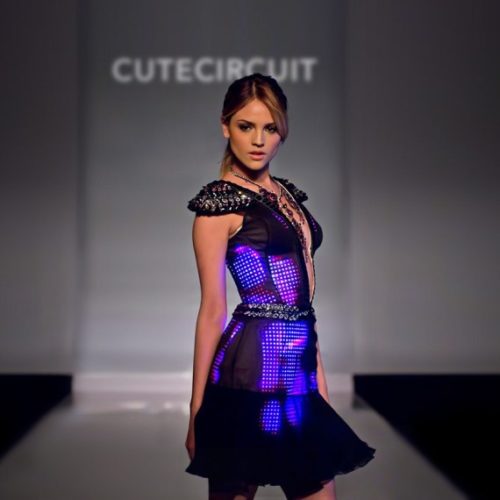 Wearable tech has been on the market for some time, from the earliest days of the FitBit to the latest iterations of the Apple Watch and Google Glass. Now, fashion leaders are merging form and function to make wearables more stylish and, well, wearable. Already, you can buy a tech-connected version of nearly any piece of jewelry, with watches being the most popular.
Wearable tech has been on the market for some time, from the earliest days of the FitBit to the latest iterations of the Apple Watch and Google Glass. Now, fashion leaders are merging form and function to make wearables more stylish and, well, wearable. Already, you can buy a tech-connected version of nearly any piece of jewelry, with watches being the most popular.
Wear OS — Google’s smartwatch operating system — is now live in watches from brands like Michael Kors, Tag Heuer, Montblanc, ZTE, Asus, Huawei, Fossil, and Diesel. Formerly known as Android Wear, Wear OS has undergone a number of updates and changes since 2017, including new features, more standalone apps, and a better user experience for iPhone users.
Android Wear-enabled Michael Kors Bradshaw Access
Fashion brands and startups are creating connected bracelets, rings, and necklaces too. Rebecca Minkoff collaborated with Case Mate on the leather Lightning Cable Bracelet, which converts into a USB connector to charge and sync an iPhone on the go, making it “just the thing for tech-savvy girls,” according to the website.
The water-resistant titanium Motiv ring connects to an app to track activity, sleep, and heart rate. The watch comes in silver, black, or rose gold, and is available in seven sizes. Swarovski worked with Misfit Wearables to create its “activity crystal,” an app-connected jewel for tracking workouts and sleep patterns. The crystal can be worn on a necklace or wrist cuff.
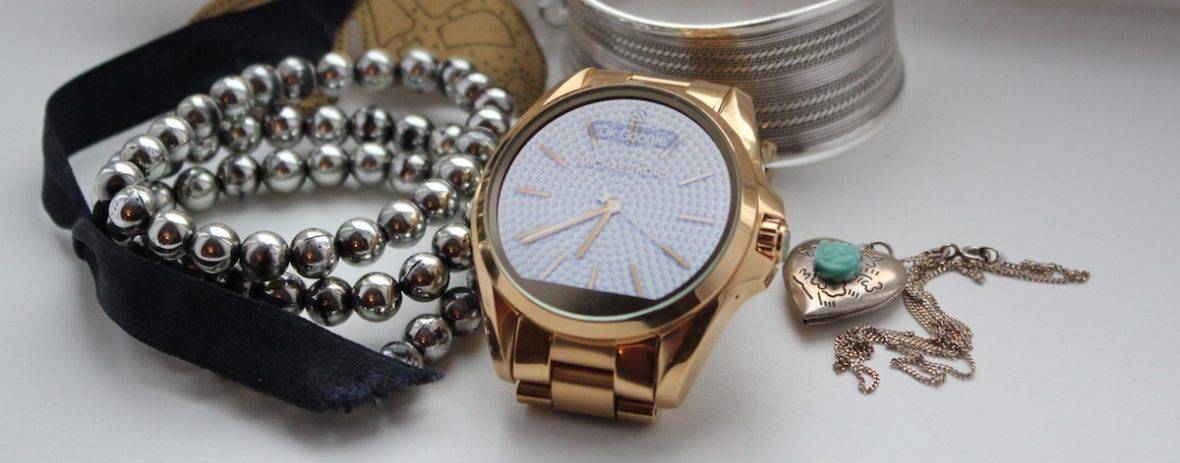 Beyond jewelry, the latest fashion tech innovations embed app-connected hardware right into our clothing.
Beyond jewelry, the latest fashion tech innovations embed app-connected hardware right into our clothing.
Levi’s and Google, for example, teamed up on a line of smart denim jackets that can recognize gestures and perform various acts such as playing the next song in a playlist or declining an incoming call. Users customize their gesture controls in a companion app.
The jackets rely on a material Google developed called Jacquard Threads, the “first full scale digital platform created for smart clothing.” The threads are made with hyper-thin conductive metal alloys, which can be woven into natural and synthetic fibers and integrated with embedded sensors. They’re even machine washable.
“Gesture-sensing Jacquard Threads are woven into the cuff and wirelessly connected to your mobile phone using tiny electronics embedded inside the sleeve and a flexible snap tag,” wrote Dr. Ivan Poupyrev, Google Engineering Director.
Samsung has also demoed connected-tech garments that look and feel like clothes you already wear. Its Body Compass workout suit features hidden sensors that can track your workouts or wellness metrics, while its Smart Suit features gesture-controlled, app-connected cufflinks.
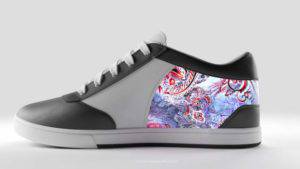 Advances in wearable-tech will make our clothes more functional, as well. You can already buy a phone-charging jacket from Baubax, and MIT researchers have developed self-ventilating garments capable of cooling you as you work out. During the Pyeongchang Winter Olympics, Ralph Lauren equipped Team USA with app-controlled, heated parkas.
Advances in wearable-tech will make our clothes more functional, as well. You can already buy a phone-charging jacket from Baubax, and MIT researchers have developed self-ventilating garments capable of cooling you as you work out. During the Pyeongchang Winter Olympics, Ralph Lauren equipped Team USA with app-controlled, heated parkas.
Smart shoes are also gaining traction, with functions like vibration and heating making their way into apparel — not to mention GIF displays.
In footwear, Digitsole‘s shoes can auto-lace or auto-heat themselves (based on user settings in the companion app), while ShiftWear sneakers (shown right) feature curved electronic displays which can showcase user-selected images, GIFs, or looping animations.
Lechal makes navigation-assisting shoes, which connect to your maps app and apply gentle vibrations to your feet to guide you “invisibly but intuitively.”
3D SCANNING
 And thanks to 3D scanning technology, our clothes can even help us buy more clothes. For example, LikeAGlove has developed smart leggings that measure users’ figures and use the data to point them to specific styles and brands of pants that will fit them best.
And thanks to 3D scanning technology, our clothes can even help us buy more clothes. For example, LikeAGlove has developed smart leggings that measure users’ figures and use the data to point them to specific styles and brands of pants that will fit them best.
As brands increasingly deploy 3D scanning for virtual try-on, these kinds of smart garments will support greater personalization and the future of “augmented commerce.”
NOVEL FABRICS
Novel fabrics made of next-gen materials may find commercial adoption in the future of fashion, too. Startups like Modern Meadow are hacking the biology within cells to create lab-grown leather without harming animals, while Bolt Threads and EntoGenetics, among others, are innovating to make super-strong spider silk into readily accessible fabric source.
And Tom Brady " target="_blank" rel="noopener">apparently sleeps in pajamas with a “bio-ceramic print” that combines with body heat to produce far infrared radiation (FIR), which is meant to reduce inflammation, improve circulation, and help the body recover faster.
Fashions that change color may be coming too. While Hypercolor color-shifting t-shirts and mood rings had a moment in the 90s, the latest iterations are far more sophisticated. MIT researchers created a system called ColorFab 3D, which 3D prints objects with “photochromic inks” that change color when exposed to certain wavelengths of UV light. The first item ColorFab created with the technology is a ring that can be programmed to change into a handful of preset, customizable colors.
The team behind Google’s Jacquard Threads is also making color-shifting possible with Ebb, a color-changing fabric technology (developed with UC Berkeley researchers) that could someday be programmed to change with your mood or setting.
And with the same kind of app connectivity seen in the Levi’s-Jacquard jacket, the Ebb materials could even help you conduct many activities you currently do on your phone with color signals instead — for example, alerting you to an incoming call by changing the color of your cuff.
“If you can weave the sensor into the textile, as a material you’re moving away from the electronics,” Google’s Ivan Poupyrev has said. “You’re making the basic materials of the world around us interactive.”
Technology is changing the game for every participant in the fashion industry: designers, manufacturers, retailers, stylists, and, of course, consumers. Cutting-edge technologies like blockchain and virtual reality have a range of applications in the age-old fashion world, allowing production and distribution methods to evolve just as quickly as ever-changing tastes and fashion trends. Meanwhile from sketchpad to store shelf, every aspect of the industry is being automated or enhanced by tech — making for faster production, more effective inventory management, and a wider range of online and in-store retail experiences.
The result of all this will be a sector that becomes increasingly streamlined while simultaneously offering more options than ever before. A wave of new manufacturing processes, distribution channels, and even raw materials and fabrics will increasingly allow brands to offer hyper-personalized products and experiences.
Automation could displace many roles within the fashion industry. But it will also likely result in new types of roles around curation, customer service, and engineering. As tech becomes more responsive to the individual, it will be interesting to watch how the role of designer and brand shifts from tastemaker to taste-interpreter.
References: Rapid Iteration and Production - http://makersrow.com/






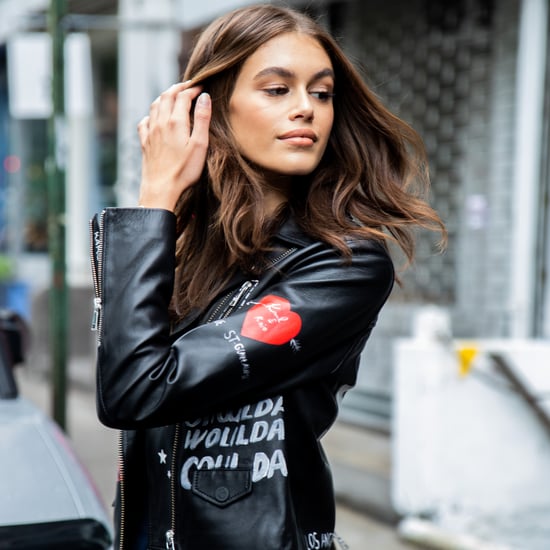
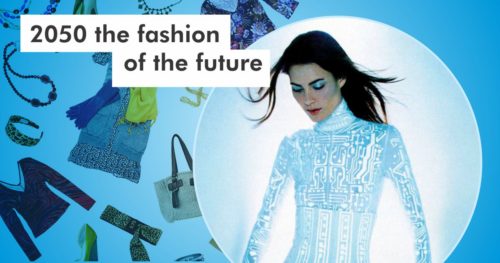
 RFID FOR VERIFICATION, AUTOMATION, & ONLINE INTEGRATION
RFID FOR VERIFICATION, AUTOMATION, & ONLINE INTEGRATION




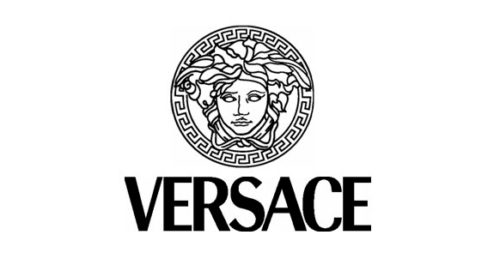


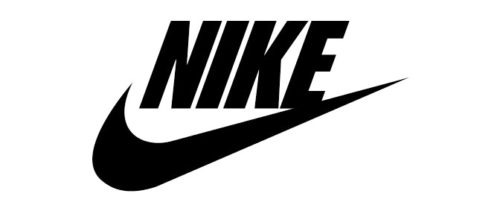
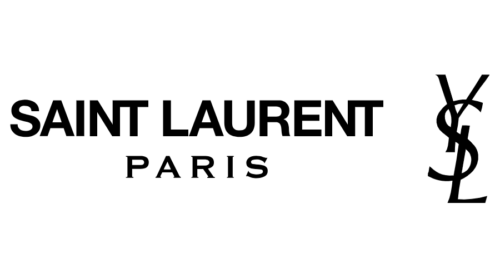

Leave a Reply